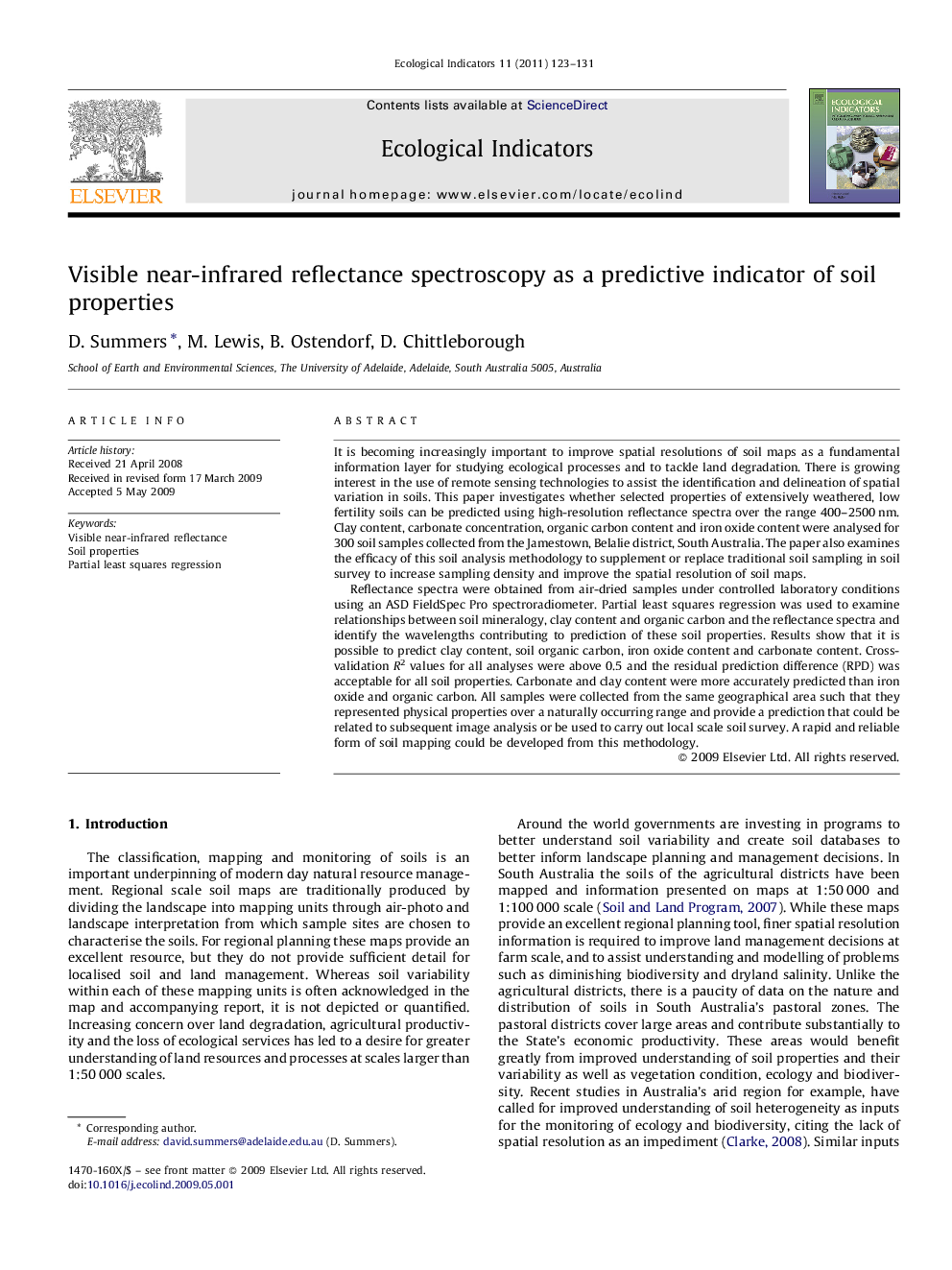| Article ID | Journal | Published Year | Pages | File Type |
|---|---|---|---|---|
| 4374185 | Ecological Indicators | 2011 | 9 Pages |
It is becoming increasingly important to improve spatial resolutions of soil maps as a fundamental information layer for studying ecological processes and to tackle land degradation. There is growing interest in the use of remote sensing technologies to assist the identification and delineation of spatial variation in soils. This paper investigates whether selected properties of extensively weathered, low fertility soils can be predicted using high-resolution reflectance spectra over the range 400–2500 nm. Clay content, carbonate concentration, organic carbon content and iron oxide content were analysed for 300 soil samples collected from the Jamestown, Belalie district, South Australia. The paper also examines the efficacy of this soil analysis methodology to supplement or replace traditional soil sampling in soil survey to increase sampling density and improve the spatial resolution of soil maps.Reflectance spectra were obtained from air-dried samples under controlled laboratory conditions using an ASD FieldSpec Pro spectroradiometer. Partial least squares regression was used to examine relationships between soil mineralogy, clay content and organic carbon and the reflectance spectra and identify the wavelengths contributing to prediction of these soil properties. Results show that it is possible to predict clay content, soil organic carbon, iron oxide content and carbonate content. Cross-validation R2 values for all analyses were above 0.5 and the residual prediction difference (RPD) was acceptable for all soil properties. Carbonate and clay content were more accurately predicted than iron oxide and organic carbon. All samples were collected from the same geographical area such that they represented physical properties over a naturally occurring range and provide a prediction that could be related to subsequent image analysis or be used to carry out local scale soil survey. A rapid and reliable form of soil mapping could be developed from this methodology.
